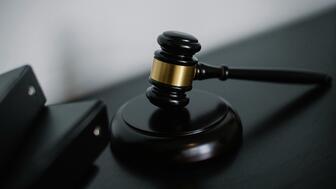The luxury goods company said founder Ippolita Rostagno will remain at the brand’s helm.
Designs on Marketing: All About Those Analytics
What should you know about bounce rate and referral traffic? And what is a good open rate for a newsletter? Jacqueline Stone answers these questions and more in her latest jewelry marketing column.
I’ll be the first to admit that a lot of what I do in my new job as a marketer is akin to cooking pasta; I’m throwing spaghetti at the wall and seeing what sticks. It’s a constant experiment to find ways to break through the noise and reach my clients’ target audiences.
However, the one thing that every marketer needs is analytics.
While I can’t guarantee extra money in the bank (read: marketing is NOT sales), I better be doing a good job at driving traffic to your site and increasing your digital footprint. I let my clients know up front that this process usually takes about 3 to 6 months, sometimes longer.

Case in point, I’d like to give a huge thank you to Nomad Beads for sticking with me. We didn’t see a significant bump in growth until we actively starting adding SKUs to the company’s website each week. It took about a year of our time together until they started to see online sales and an increase in traffic to the shop. Even though they didn’t see things change as rapidly as they’d like, I know they appreciate my hustle. I’m very grateful for them letting me experiment, and it’s fun to watch them finally reaping the fruits of all our hard work.
Put Your Website to Work
First things first: Let’s take a look at your website. Do you have a Google Analytics account set up? If not, I highly recommend this service. It’s free, and the data Google provides is so insightful.
Here are the key indicators that I’m looking at when I’m crafting your marketing plan.
Audience
Users: No. of people who are looking at your site
New Users: No. of people who landed on your site who had not visited previously
Sessions: No. of times users viewed your site (one user can visit the site several times)
Bounce Rate: The percentage of visitors who come to your site and leave after viewing only one page (usually want to keep this under 50 percent)
Average Session Duration: How long someone is staying
It’s great to look at this once a month. You can use the date filters in the top right-hand corner of the Google Analytics Audience > Overview page to compare time blocks to see if your audience is growing or decreasing over time.
It is particularly important to take time to review the percentage of new users over time as well to see how many new people are landing on your site each month. A marketer’s goal is to keep that number constantly increasing.
Acquisition
Direct: What percentage of your audience landed on your website by simply typing in your URL (no way to track where they came from)
Organic Search: What percentage of your audience found your website based upon key search terms you have embedded in the website’s back end (essentially search engine optimization or SEO)
Social: What percentage of your audience found you through social media
Referral: What percentage of your audience found you through mention on other websites; be sure to click on the word “Referral” on the Acquisition > Overview page so you know what external websites are pushing traffic to your site.
Paid Search: How many people landed on your website due to Google AdWords
It’s good to look at this over time periods (use the date filters in the top right-hand corner of the Acquisition > Overview page) to see where your traffic is coming from and if your social media initiatives are working.
Email Marketing
Believe it or not, there’s more to study than just your website.
Research shows that while social media is an essential part of the formula, email marketing still reigns supreme. Some things for you to think about while getting started are below.
--How many people are on your contact list? I find that online sales are directly proportional to this list. I find a list of 5,000 to 10,000 vetted contacts is effective.
--Don’t buy lists! Find inventive ways to have people sign up for your newsletter or email blasts. You don’t want to send your notes to people who never asked for them as they’re likely to report you as spam.
--What type of content are you providing? Is it a value-add to your customers? Why would they be excited to get a note from you?
--What is the frequency of your email blasts? Your newsletters? What is the right frequency that’s consistent but not annoying for your customers?
Analytically speaking, we are looking at your open rate. Industry average is about 23 percent. You want to shoot for that number or even better if possible.
The more engaging the content, the more likely they are going to take a look. You truly want to think about the user experience. I’m sure you get email blasts from some of your favorite retailers. What motivates you to click on the ones that you open?
You also want to look at your click-through rate, which is monitoring how many people are opening your note and taking action. Digital marketing is about driving as many people to your website as possible to potentially make a purchase. How many people clicked on your images? Your hyperlinks? What links fared the best? It’s useful to look at this to refine your strategy moving forward.
Social Media
Are you still with me? Good, because we also have to take our social media presence into consideration.
I’ve promised Michelle (Graff, the editor-in-chief of National Jeweler) and you that I will take a deeper dive into each of the below platforms. I plan on chatting it up with industry leaders such as Third Coast Gems to help me craft best practices guides.
In the meantime, I ask you to look at the analytics of each of these channels:
-- Facebook;
-- Instagram;
-- Pinterest;
-- Twitter;
-- LinkedIn; and
-- Snapchat.
How many followers do you have? What is your audience’s behavior? Are they actively engaged? What conversation(s) have you started?
While the word “analytics” can be daunting to some, I find it fun. I hope the tips shared here today break it down for you in a way that feels manageable.
Anyone can start to become more strategic in their marketing moves as long as they have the data to guide them in the right direction.
Do you have a marketing question? Please comment below or email me at saltandstone@gmail.com.
A recovering jewelry designer, Jacqueline Stone was the chief creative officer of her company, Salt + Stone, and now is the CEO of her own marketing consulting and coaching business. Stone can be reached at saltandstone@gmail.com.
The Latest

Laura Burdese, who joined the Italian luxury brand in 2022, will take on the role in July.

The National Jeweler editors revisit the most noteworthy industry happenings and design trends from 2025.

How Jewelers of America’s 20 Under 40 are leading to ensure a brighter future for the jewelry industry.

Need a gift for the cat lover who has everything? Look no further than our latest Piece of the Week.


It purchased the “Grosse Pièce,” an ultra-complicated Audemars Piguet pocket watch from the ‘20s, for a record-breaking price at Sotheby’s.

The lab-grown diamond grower now offers custom engagement and fashion jewelry through its Kira Custom Lab Jewelry service.

Roseco’s 704-page catalog showcases new lab-grown diamonds, findings, tools & more—available in print or interactive digital editions.

Chandler got his start at Michelson Jewelers and has served as DCA president and CEO since 2001. He will retire at the end of the month.

The boutique is slated to open this week inside Terminal 8, offering pre-owned Rolex watches and more to international travelers.

Sponsored by Digital Monitoring Products

The special-edition egg pendant ingested in a New Zealand jewelry store was recovered after a six-day wait.

Associate Editor Natalie Francisco plays favorites with Piece of the Week, selecting a standout piece of jewelry from each month of 2025.

The “Love and Desire” campaign is inspired by the magic that follows when one’s heart leads the way, said the brand.

Two awardees will receive free tuition for an educational course at the Swiss lab, with flights and lodging included.

Berta de Pablos-Barbier will replace Alexander Lacik at the start of January, two months earlier than expected.

Sotheby’s held its first two jewelry sales at the Breuer building last week, and they totaled nearly $44 million.

Winners will receive free registration and lodging for its fourth annual event in Detroit.

Here are six ideas for making more engaging content for Instagram Reels and TikTok, courtesy of Duvall O’Steen and Jen Cullen Williams.

The honorees include a notable jewelry brand, an industry veteran, and an independent retailer.

Carlos Jose Hernandez and Joshua Zuazo were sentenced to life without the possibility of parole in the 2024 murder of Hussein “Sam” Murray.

Yood will serve alongside Eduard Stefanescu, the sustainability manager for C.Hafner, a precious metals refiner in Germany.

The New Orleans jeweler is also hosting pop-up jewelry boutiques in New York City and Dallas.

Set in a Tiffany & Co. necklace, it sold for $4.2 million, the highest price and price per carat paid for a Paraíba tourmaline at auction.

The jeweler’s “Deep Freeze” display showcases its iconic jewelry designs frozen in a vintage icebox.

Take luxury gifting to new heights this holiday season with the jeweler’s showstopping 12-carat sphene ring.

This year's theme is “Unveiling the Depths of the Ocean.”


























